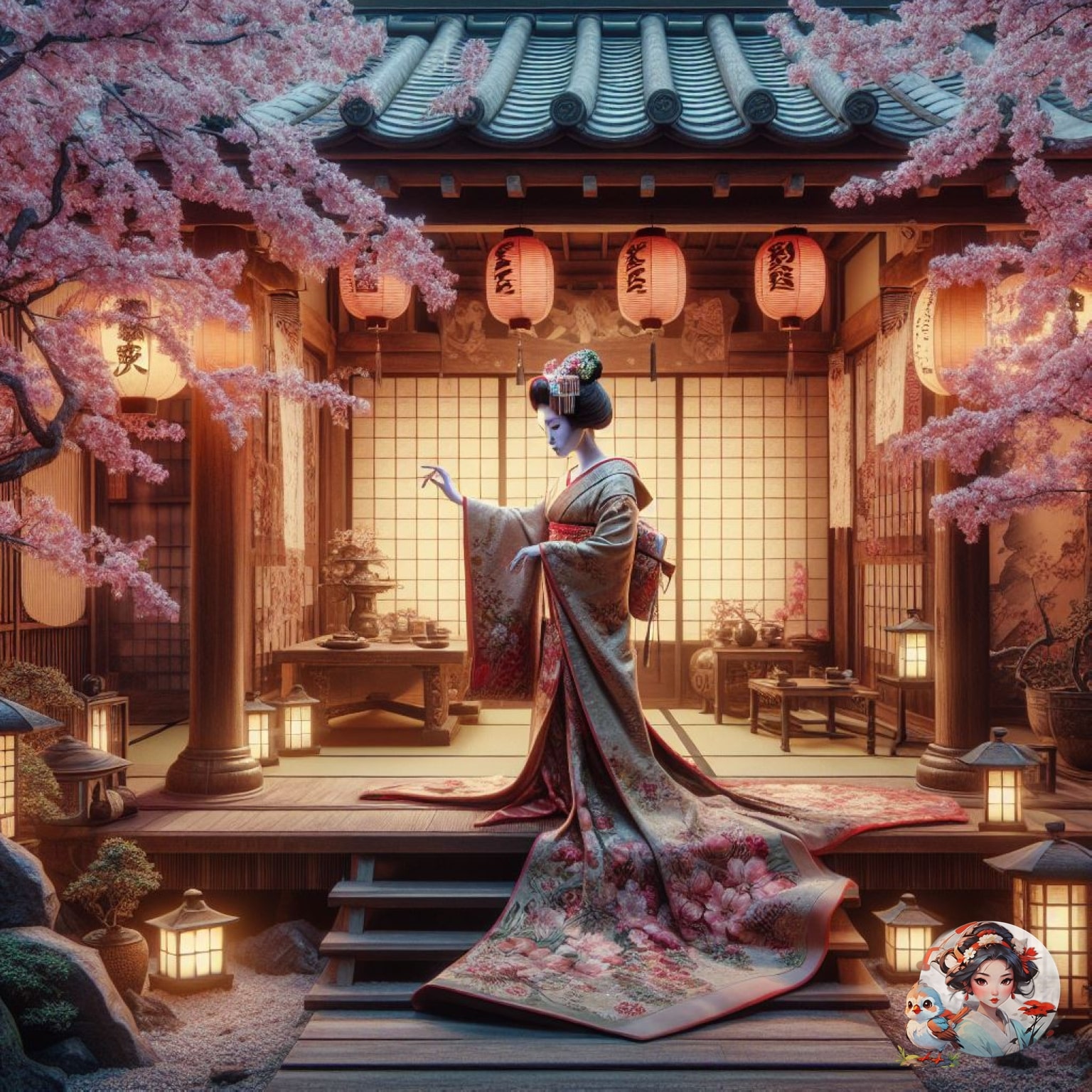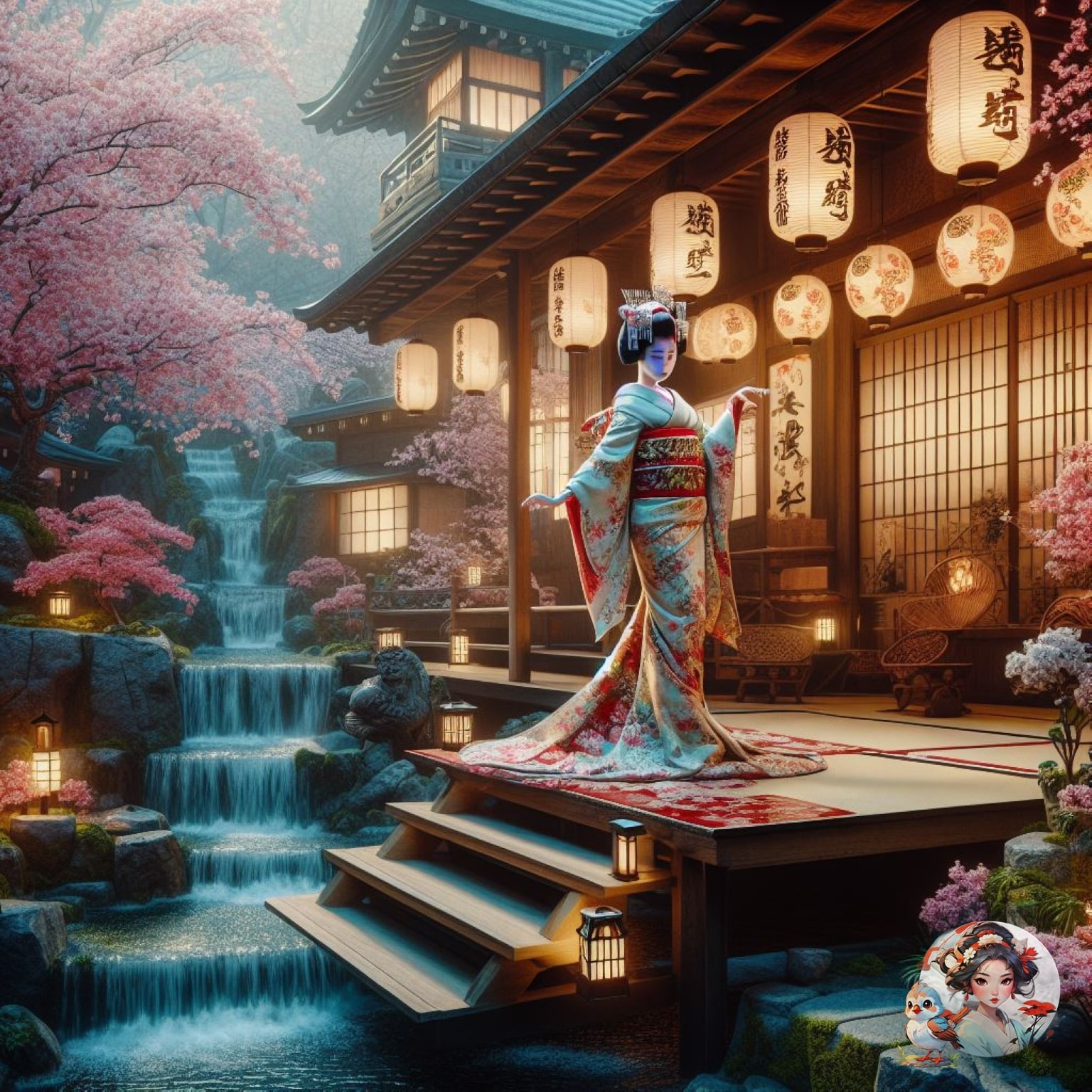The world of geisha is a fascinating blend of history, tradition, and cultural significance, providing a captivating insight into Japanese society. Geishas, who were once male entertainers but evolved into revered female performers skilled in traditional arts, embody grace and elegance while preserving Japanese heritage.
Their journey from apprentice maiko to esteemed geisha demonstrates a deep commitment to upholding centuries-old customs, despite the challenges posed by modernization and Western influences. As we delve into the enigmatic world of geisha, we will uncover the intricacies of their past and present, shedding light on the enduring impact they have had on Japanese culture and the uncertainties they face in an ever-evolving society.
Table of Contents
ToggleThe geisha’s evolution from their origins as male entertainers in the 13th century to their current iconic status as female performers showcases the rich history and cultural significance of this traditional Japanese art form. Initially, geishas were male entertainers known as taikomochi, but over time, they transitioned to storytelling and conversation, eventually becoming female-dominated in the 17th century. Geishas have played a crucial role in preserving Japanese culture and traditions, earning respect as valued members of society.

Despite their historical significance, modernization and Western influences have impacted the demand for geisha entertainment. Efforts are underway to preserve and promote geisha culture and traditions, as they continue to symbolize Japanese culture and heritage. The portrayal of geishas in popular culture reflects the evolution of gender roles and the enigmatic allure of this traditional art form.
In the secretive world of geisha, young trainees called shikomisan undergo intense training in traditional Japanese cultural arts and etiquette. This includes learning traditional dance, playing musical instruments like the shamisen, practicing the tea ceremony, and mastering the art of conversation. Geisha performances play a crucial role in preserving and showcasing Japanese cultural heritage through artistic expression. As apprentices progress, they gradually master the intricate techniques and nuances of each art form, preparing to become maiko and eventually full-fledged geisha.
This demanding training period, which can last up to five years, not only hones their artistic abilities but also instills in them the grace, elegance, and professionalism required for their future roles as respected members of society.
The geisha’s appearance and style represent a beautiful and elegant tradition in Japanese culture. Geisha fashion includes stunning kimonos with intricate patterns, carefully chosen to match the seasons and specific events. Geisha and maikos wear special kimonos, with maikos wearing the sodehiki, a long kimono that shows they are in training. Geisha makeup involves applying white powder paste called oshiroi, black-colored eyebrows, and red eye makeup to enhance specific features.
They also use different lip makeup styles to convey innocence or maturity. Geisha hairstyles are very detailed, with maikos maintaining their own hair for a week and using special pillows to preserve the elaborate style. These details demonstrate the dedication and artistry of the geisha’s beauty and style.
Geishas play a crucial role in preserving and promoting Japanese cultural heritage and traditions in modern society. They meticulously follow etiquette and protocol, maintaining their esteemed position within the geisha community and sisterhood. Geishas entertain guests with refined skills like dance, music, and conversation, ensuring the preservation of traditional arts. Through their elegant appearance and graceful demeanor, geishas and maikos symbolize the beauty and grace of Japanese culture.
They attend exclusive gatherings at tea houses and ryoutei, where they showcase their talents while upholding a high level of professionalism. Despite modernization and declining numbers, dedicated efforts are in place to sustain the essence of geisha culture and traditions. Geishas remain an iconic emblem of Japan’s rich cultural heritage, embodying grace, sophistication, and the enduring artistry of the geisha tradition.
Becoming a geisha is a journey that starts with a young apprentice, known as a maiko, who undergoes immersive and rigorous training in traditional Japanese arts and culture. The role of maiko in geisha culture is crucial as they represent the next generation of geishas. The transformation from maiko to geisha typically takes around five years, during which maikos are meticulously trained in traditional arts such as dance, music, and tea ceremony.

They also learn proper etiquette, language, and the art of dressing in kimono. This intensive training period is crucial in shaping a maiko’s skills, demeanor, and poise, preparing her for the responsibilities and expectations of a geisha. When a maiko becomes a geisha, it marks the culmination of years of hard work and dedication as they step into their role as respected entertainers and preservers of Japanese cultural heritage.
Geisha traditions and culture stem from the intensive training that young apprentices, called maiko, undergo in traditional Japanese arts and etiquette. This training is essential as it marks the crucial journey towards becoming respected entertainers and preservers of Japanese cultural heritage. Geisha fashion trends continue to influence modern style with their elaborate kimonos, intricate hairstyles, and unique makeup setting the tone for elegance and tradition.
Additionally, geisha have historically played a significant role in refining traditional dining experiences through their graceful presence and meticulous attention to hospitality, leaving a profound impact on the aesthetics and rituals surrounding Japanese cuisine. This demonstrates the enduring cultural significance of geisha in contemporary society.
Geisha today face challenges in preserving their traditional role and cultural importance in the midst of changing perceptions and the potential for cultural appropriation. The influence of modernization and Western culture has led to a decline in the number of geisha, affecting the demand for their entertainment. There are ongoing efforts to safeguard and promote geisha culture and traditions, recognizing their iconic status as symbols of Japanese culture and heritage.
However, adapting to evolving societal attitudes and addressing potential misappropriation of geisha customs presents continual challenges. Navigating these changes while upholding the authenticity and respect for geisha traditions is crucial. It is essential for geisha to find a balance between honoring their heritage and addressing contemporary perceptions to preserve their cultural significance.
In today’s changing society, it’s crucial to protect and promote geisha culture and traditions, which are at risk of being misunderstood or misrepresented. The modernization of Japan has led to a decline in the number of geishas, and Western influences have also had an impact on this traditional art form. To address these challenges, there are ongoing efforts to preserve and raise awareness about geisha customs.
These initiatives include cultural events, educational programs, and collaborations with international partners. By taking these steps, we can ensure that the rich history and traditions of geishas continue to captivate and inspire people for generations to come.
Geisha have had a profound impact on Japanese heritage, particularly in the preservation and promotion of traditional arts and cultural practices. Their expertise in traditional forms such as dance, music, and the tea ceremony has contributed to the thriving nature of Japan’s cultural heritage. Additionally, geisha have influenced fashion trends in Japan, especially through their iconic kimono attire and unique hairstyles, which embody the elegance and beauty associated with traditional Japanese clothing. Overall, geisha have left a lasting impression on Japanese heritage, enriching the nation’s cultural landscape for generations to come.
Geisha have had a significant impact on Japanese culture, particularly in the realm of art and entertainment. Their expertise in traditional forms such as dance, music, and the tea ceremony has captivated audiences and contributed to the preservation of Japan’s rich cultural heritage. Geisha’s influence on fashion is evident in their carefully crafted appearance, including intricate hairstyles, elaborate kimonos, and distinctive makeup that symbolize tradition and beauty in Japanese culture.
Additionally, geisha play a vital role in preserving traditional music, as they are highly skilled in performing classical Japanese music, including shamisen and other traditional instruments. Their dedication to mastering these art forms ensures the continuation of Japan’s rich musical heritage and contributes to the mesmerizing entertainment that has become synonymous with geisha performances.
The evolution of geisha culture has brought both challenges and opportunities as it adapts to modern society. Geisha hold immense cultural significance, representing the preservation of Japanese heritage and traditions. However, their economic impact has faced significant challenges due to modernization and Western influences. The demand for geisha entertainment has decreased, leading to a decline in their numbers. Efforts are being made to preserve and promote geisha culture and traditions, aiming to sustain their iconic symbol of Japanese culture and heritage.

Despite the challenges, geisha have also found new opportunities in the modern world, such as participating in international cultural events and embracing digital platforms to reach a wider audience, ensuring the continued relevance and appreciation of their art form.
Geisha culture has a long and rich history that spans centuries, playing a crucial role in preserving and promoting Japanese traditions. Geishas have contributed significantly to Japanese society by upholding traditional arts, music, dance, and tea ceremonies, embodying the essence of Japanese culture and elegance. However, the number of geishas has declined due to modernization and Western influences. To ensure the continuity of geisha culture, efforts are underway to attract young apprentices and raise awareness about the importance of their role. By safeguarding the legacy of geishas and adapting to contemporary demands, we can secure the future of this iconic symbol of Japanese culture and heritage.